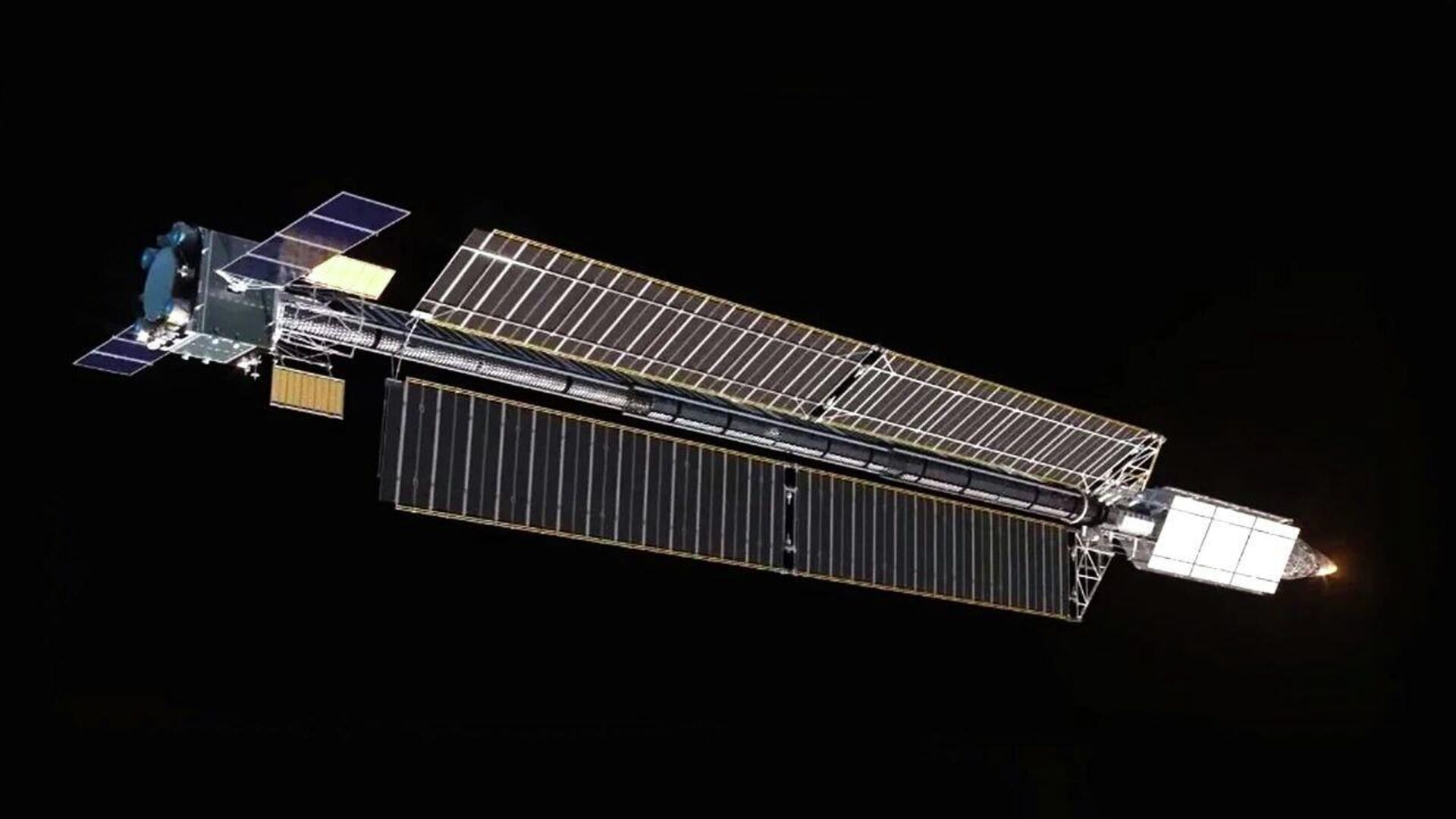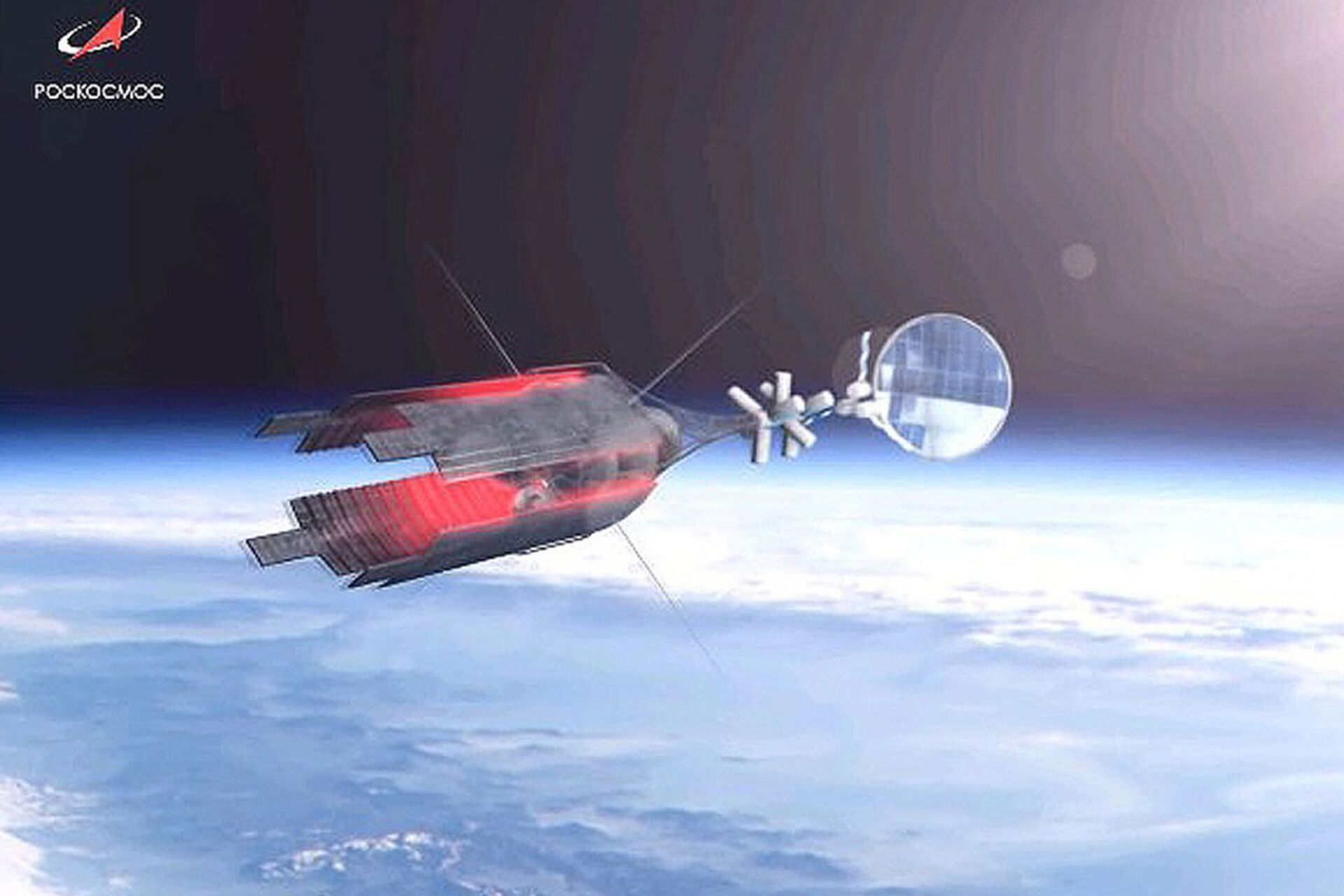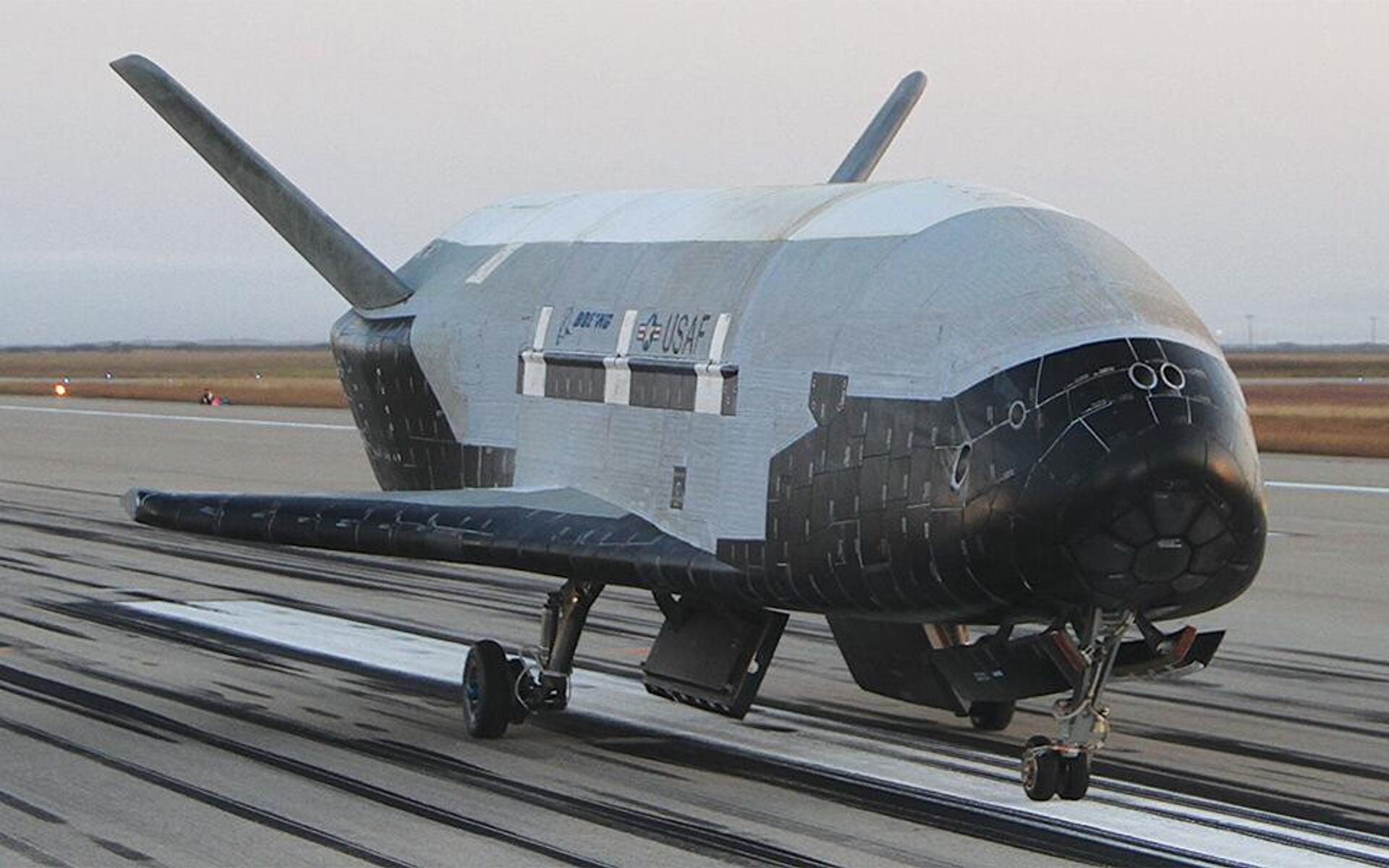https://sputniknews.in/20240216/us-hypes-russian-space-threat-hysteria-while-weaponising-space-for-decades-6565313.html
US Hypes 'Russian Space Threat' Hysteria While Weaponising Space for Decades
US Hypes 'Russian Space Threat' Hysteria While Weaponising Space for Decades
Sputnik India
Amidst escalating tensions between Russia and the US, the Russian anti-satellite capability has emerged as a focal point of concern.
2024-02-16T14:21+0530
2024-02-16T14:21+0530
2024-02-16T14:21+0530
defenсe news
vladimir putin
us
russia
ukraine
nato
roscosmos
border security force (bsf)
kinzhal hypersonic missile
mars
https://cdn1.img.sputniknews.in/img/07e8/02/10/6567523_0:0:1280:720_1920x0_80_0_0_48175114c4e260febb5a6ecec223b9b1.jpg
According to CNN, the US Congress and key US allies were recently briefed on intelligence that Russia would in the future deploy a space based capability that would be destabilising.The fact is that the capability likely being alluded to is yet to be deployed and merely emulates a capability that the US has deployed for decades now.US/NATO Space Based Assets Actively Used Against RussiaTo put the US mainstream media sensationalism into the correct perspective, it needs to be reiterated here that Russia has endured active participation of US and NATO based space and aerial assets in support of Ukraine since the start of the Russian Special Military Operation (SMO) in February 2022.US and NATO space and aerial assets have been used to systematically decimate Russian Black Sea Fleet (BSF) assets.On any given day, thousands of US & NATO satellites participate against Russia in the SMO. While US & NATO participation in the war remains undeclared, the US and NATO leaderships have on multiple occasions clearly articulated their goals of war - to inflict a strategic defeat on Russia.The dependence of US forces on their own space based communication and ISR capabilities is well known. The US wants to perpetuate its superior space based warfare capabilities by projecting any development of anti-satellite capabilities by Russia as being destabilising.Russia's Openness vs US DisinformationRussia has been vocal about its efforts to develop weapon systems to deter the existential threat that it faces from US and NATO. President Putin listed some of the major deterrent weapon systems that Russia had developed in a presentation in March 2018:Because it controls mainstream media worldwide, the US Deep State entity can manipulate perceptions to an extent where US citizens perceive Russians as being either incompetent or crazily belligerent.However, US citizens who have visited Russia as tourists know better.The So-Called Destabilising CapabilityVarious US media outlets have alluded to the Russian capability as being a nuclear anti-satellite system.Most likely, the capability being alluded to the Zeus space based nuclear powered tug which has been under very slow paced development since 2010. Even earlier, during the Soviet era, specialists from Roscosmos and Rosatom had done development work on its nuclear powered propulsion unit.Nuclear propulsion on spacecraft is significantly inferior to chemical rocket propulsion in terms of propulsive efficiency but nuclear rocket engines can operate for considerably longer periods.Once placed in orbit, the Zeus will be able to routinely alter orbital parameters, approach other satellites for inspection, repair or refuelling.It could be used to haul cargo from earth orbit into a translunar intercept target. It could similarly be used for missions to other planets of the solar system - Mars and Venus.Zeus Development ProgressAs mentioned earlier, the Zeus program has been in the public domain since its inception in 2010 and even before.In 2019, a concept for the space tug was presented for the first time at the MAKS International Aviation and Space Show outside Moscow, with a more detailed presentation given at the ARMY-2020 forum.In December 2020, Roscosmos signed a $56.5 million contract with the Arsenal Design Bureau for experimental design work for the Zeus. This work is expected to be completed by 2024, with flight testing hopefully starting in 2030.On September 4, 2021, a model of the "Zeus" was officially presented to the President of the Russian Federation Vladimir Vladimirovich Putin. It was reported that President Putin was not impressed; he reportedly pulled up the developers for the sluggishness in the implementation of this space program.Military ApplicationAs stated earlier, the Zeus is conceptually advanced space technology that can be used for space exploration as well as space based warfare.The X-37B has the capability to render inoperable entire constellations of Russian optical and radar imaging satellites, such as the Russian Liana network using kinetic / DEW weapons or EW.Russian leaders have repeatedly questioned the American leadership over X-37B deployment and use, but the US has ignored Russian concerns.Nuclear Reactor – The Big DifferenceOne reason for the stridency in the US reaction to Russia's Zeus capability may well be the fact that the Zeus will have a megawatt class nuclear power reactor on board as a power source.A Zeus based radar, could be deployed at much higher altitudes than conventionally powered radar satellites, eliminating the threat from surface based ASAT weapons.Besides powerful radar, a Zeus based platform could deploy powerful DEW to incapacitate military satellites without generating any debris.Radioisotope thermoelectric generators (RTGs)Nuclear energy, in the form Radioisotope thermoelectric generators (RTGs), has routinely been used as a power source on spacecraft in the past.RTGs convert heat from the natural radioactive decay of isotopes, such as plutonium-238, into electricity. This technology provides a long-lasting and reliable power source, ideal for missions that travel far from the Sun where solar panels would be less effective.RTG power outputs are measured in Watts, not megawatts.ConclusionThe destabilising Russian anti-satellite capability being hyped by the US MSM and some US officials has been underdevelopment in Russia since 2010, and has been actively deployed by the US against Russia since the same year.Russia is estimated to be 6 years away from deploying the capability.The Russian Zeus program to develop a nuclear powered space tug is aimed at facilitating interplanetary space travel including missions to the Moon, Mars and Venus. Its hypothetical military capabilities merely emulate the capabilities of the US X-37B, which the US operationally deployed in 2010, ignoring Russian protests over its military capabilities.
https://sputniknews.in/20231226/how-us-tried-but-failed-to-disrupt-india-russia-relations-5969702.html
us
russia
ukraine
mars
moon
Sputnik India
feedback.hindi@sputniknews.com
+74956456601
MIA „Rossiya Segodnya“
2024
News
en_IN
Sputnik India
feedback.hindi@sputniknews.com
+74956456601
MIA „Rossiya Segodnya“
Sputnik India
feedback.hindi@sputniknews.com
+74956456601
MIA „Rossiya Segodnya“
us, russia, nato, space, assets, zeus, nuclear-powered tug, development, capabilities, mainstream media, sensationalism, disinformation, propaganda, warfare, satellite, deployment, x-37b, technology, military, operations, sanctions, geopolitical, tensions, us deep state, perception, manipulation, propaganda, roscosmos, putin, development, progress, contracts, military application, space exploration, space warfare, kinetic weapons, directed energy weapons, orbital manipulation, satellite interception, russia-us relations, nato, confrontation.
us, russia, nato, space, assets, zeus, nuclear-powered tug, development, capabilities, mainstream media, sensationalism, disinformation, propaganda, warfare, satellite, deployment, x-37b, technology, military, operations, sanctions, geopolitical, tensions, us deep state, perception, manipulation, propaganda, roscosmos, putin, development, progress, contracts, military application, space exploration, space warfare, kinetic weapons, directed energy weapons, orbital manipulation, satellite interception, russia-us relations, nato, confrontation.
US Hypes 'Russian Space Threat' Hysteria While Weaponising Space for Decades
Amidst escalating tensions between Russia and the US, the Russian anti-satellite capability has emerged as a focal point of concern.
According to CNN, the US Congress and key US allies were recently briefed on intelligence that Russia would in the future deploy a space based capability that would be destabilising.
The fact is that the capability likely being alluded to is yet to be deployed and merely emulates a capability that the US has deployed for decades now.
US/NATO Space Based Assets Actively Used Against Russia
To put the US mainstream media sensationalism into the correct perspective, it needs to be reiterated here that Russia has endured active participation of US and
NATO based space and aerial assets in support of
Ukraine since the start of the Russian Special Military Operation (SMO) in February 2022.
US and NATO space and aerial assets have been used to
systematically decimate Russian Black Sea Fleet (
BSF) assets.
On any given day, thousands of US & NATO satellites participate against Russia in the SMO. While US & NATO participation in the war remains undeclared, the US and NATO leaderships have on multiple occasions clearly articulated their goals of war - to inflict a strategic defeat on Russia.
The Ukrainians might fool themselves by claiming credit for the attacks on the Russian BSF assets, but the Russians know who is responsible for the attacks on its fleet.
The dependence of US forces on their own space based communication and ISR capabilities is well known. The US wants to perpetuate its superior space based warfare capabilities by projecting any development of anti-satellite capabilities by Russia as being destabilising.
Russia's Openness vs US Disinformation
Russia has been vocal about its efforts to develop weapon systems to deter the existential threat that it faces from US and NATO. President Putin listed some of the major deterrent weapon systems that Russia had developed in a presentation in March 2018:
Avangard Hypersonic Glide Vehicle;
Kinzhal Hypersonic Missile;
Sarmat Intercontinental Ballistic Missile (ICBM);
Burevestnik Nuclear-Powered Cruise Missile;
Poseidon Underwater Drone.
The US first dismisses Russian technological advances as boasts and exaggerations and then, when the advances become undeniable, projects them as a mindless aggressive posturing.
Because it controls mainstream media worldwide, the US Deep State entity can manipulate perceptions to an extent where US citizens perceive Russians as being either incompetent or crazily belligerent.
However, US citizens who have visited Russia as tourists know better.
The So-Called Destabilising Capability
Various US media outlets have alluded to the Russian capability as being a nuclear anti-satellite system.
Most likely, the capability being alluded to the
Zeus space based nuclear powered tug which has been under very slow paced development since 2010. Even earlier, during the Soviet era, specialists from
Roscosmos and
Rosatom had done development work on its
nuclear powered propulsion unit.
Note that the Zeus merely uses nuclear propulsion. It does not feature a nuclear weapon, as the Western Main Stream Media (MSM) characterisation "nuclear anti-satellite system" would suggest. The Zeus cannot be used to mount nuclear attacks.
Nuclear propulsion on spacecraft is significantly inferior to chemical rocket propulsion in terms of propulsive efficiency but nuclear rocket engines can operate for considerably longer periods.
Once placed in orbit, the Zeus will be able to routinely alter orbital parameters, approach other satellites for inspection, repair or refuelling.
It could be used to haul cargo from earth orbit into a translunar intercept target. It could similarly be used for missions to other planets of the solar system -
Mars and Venus.
Zeus Development Progress
As mentioned earlier, the Zeus program has been in the public domain since its inception in 2010 and even before.
In 2019, a concept for the space tug was presented for the first time at the MAKS International Aviation and Space Show outside
Moscow, with a more detailed presentation given at the ARMY-2020 forum.
In December 2020, Roscosmos signed a $56.5 million contract with the Arsenal Design Bureau for experimental design work for the Zeus. This work is expected to be completed by 2024, with flight testing hopefully starting in 2030.
On September 4, 2021, a model of the "Zeus" was officially presented to the President of the Russian Federation Vladimir Vladimirovich Putin. It was reported that President Putin was not impressed; he reportedly pulled up the developers for the sluggishness in the implementation of this space program.
As stated earlier, the Zeus is conceptually advanced space technology that can be used for space exploration as well as space based warfare.
The Zeus platform could emulate the capabilities of the X-37B, an unmanned reusable space shuttle, first deployed by the US in April 2010. The X-37 can change orbits, approach and operate in close proximity to other satellites, intercepting up and downlink communication. It can render satellites in operable temporarily using EW, or permanently using kinetic or DEW (Directed Energy Weapons) means.
The X-37B has the capability to render inoperable entire constellations of Russian optical and radar imaging satellites, such as the Russian Liana network using kinetic / DEW weapons or EW.
Russian leaders have repeatedly questioned the American leadership over X-37B deployment and use, but the US has ignored Russian concerns.
Nuclear Reactor – The Big Difference
One reason for the stridency in the US reaction to Russia's Zeus capability may well be the fact that the Zeus will have a megawatt class nuclear power reactor on board as a power source.
Such a powerful energy source would allow the Zeus to feature a powerful space based radar to accurately track objects in space (satellites & ballistic missiles), near the Earth's surface (aircraft, cruise missiles, ballistic missiles) and on the Earth's surface (ships, armour, static targets).
A Zeus based radar, could be deployed at much higher altitudes than conventionally powered radar satellites, eliminating the threat from surface based ASAT weapons.
Besides powerful radar, a Zeus based platform could deploy powerful DEW to incapacitate military satellites without generating any debris.
Radioisotope thermoelectric generators (RTGs)
Nuclear energy, in the form Radioisotope thermoelectric generators (RTGs), has routinely been used as a power source on spacecraft in the past.
RTGs convert heat from the natural radioactive decay of isotopes, such as plutonium-238, into electricity. This technology provides a long-lasting and reliable power source, ideal for missions that travel far from the Sun where solar panels would be less effective.
RTG power outputs are measured in Watts, not megawatts.
The destabilising Russian anti-satellite capability being hyped by the US MSM and some US officials has been underdevelopment in Russia since 2010, and has been actively deployed by the US against Russia since the same year.
Russia is estimated to be 6 years away from deploying the capability.
Under the circumstances, it appears that the sensationalism and fear mongering is designed to scare US citizens and elements in the US leadership into funding the mindless war in Ukraine, unrealistically aimed at inflicting a strategic defeat on Russia.
The Russian Zeus program to develop a nuclear powered space tug is aimed at facilitating
interplanetary space travel including missions to
the Moon, Mars and Venus. Its
hypothetical military capabilities merely emulate the capabilities of the US X-37B, which the US operationally deployed in 2010, ignoring Russian protests over its military capabilities.





